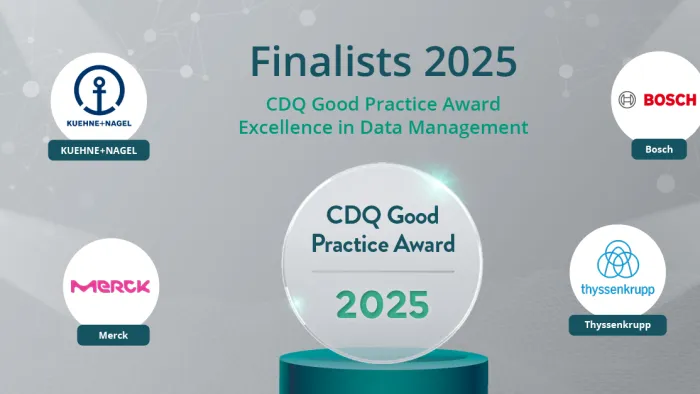CDQ Blog
Our monthly blog updates full of inspiration, webinars, articles, ebooks, best practices, trends and news.
The finalists for the CDQ Good Practice Award 2025 are here!
We are delighted to announce the four finalists for this year’s CDQ Good Practice Award: Kühne+Nagel, Bosch, Merck, and thyssenkrupp.
A practical guide to managing regulatory compliance in business partner relationships
Regulatory compliance is complex and evolving. Not much of a surprise to anyone in today’s global business environment. Governments and international bodies…
How Henkel is turning master data quality into a service
Every now and then, you come across a project that makes you stop and think: “Now that’s how it should be done!” That’s exactly the case with Henkel and their…
Clarity, trust and autonomy for remote Dev Teams
We’ve always believed in giving our engineering teams the freedom to focus on what matters: building great software for our customers. But as a remote-first…
A tribute to the unsung heroes: why master data professionals deserve a break
Picture this: You’re sipping your first coffee of the day, ready to tackle your to-do list. Before you even open your inbox, a wave of urgent messages crashes…
Eine Deutschland AG der Daten: the time is now
In their thought-provoking guest article in the Frankfurter Allgemeine Zeitung, our CDQ colleagues Prof. Dr.-Ing. Boris Otto and Dr. Sebastian Muschter argue…





